One of the highest honours in the natural history world is to have a species named after you, often to honour your work. Some species are named after their characteristics – colours, size, behaviour, but some taxonomists name species after loved ones, some after fictional characters (such as the weevil Trigonopterus ewok, named after the Star Wars species in 2021), and some species are named after celebrities (such as the millipede Nannaria swiftae, named after Taylor Swift in 2022).
Prolific taxonomists usually end up using in a combination of name sources, as they have so many species to describe and name.
How many species have been named after David Attenborough?
It will come as no surprise then that Sir David Attenborough, the world's most famous natural history presenter and conservationist, has numerous species named after him! From a Madagascan dragonfly named as a present for his 90th birthday, to a tree with beautiful flowers, there's a wide range of animals and plants now bearing the Attenborough name, with the scientists usually describing him as an inspiration and “a childhood hero”.
In most cases, it is the specific name is derived from Attenborough's name. However for a few species, a colourful semislug in Australia, a flowering plant in Gabon and an extinct marine reptile, it is the genus name.
Sir David Attenborough joined the palaeontologist and author Richard Fortey to discuss naming species and the importance of taxonomy in a talk for the International Commission on Zoological Nomenclature at the Natural History Museum:
Please note that external videos may contain ads:
The Attenborough - Fortey talk What's in a name? | Natural History Museum
David Attenborough's recent programmes:
What species have been named after David Attenborough?
Attenborough's black-eyed satyr butterfly (Euptchia attenboroughi)
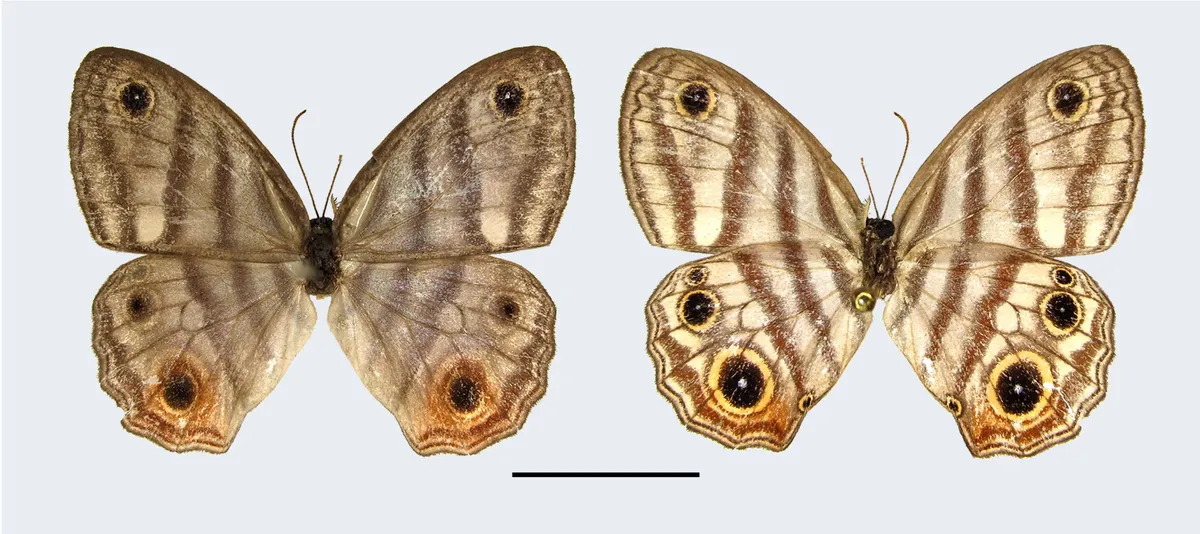
This is the first butterfly to be named after Attenborough. Writing in the journal ZooKeys, the scientists said the naming was “in gratitude for opening the eyes and hearts of millions to the natural world through his inspiring and edifying work”.
Six specimens were originally collected from a small area of forest along the borders of Brazil, Colombia and Venezuela to the north of the Amazon river. The similar E. Sophiae, described from the south of the river, was named after the niece of one of the scientists involved.
Described in: 2015
Read the full paper in ZooKeys.
Miniature orchid (Lepanthes attenboroughii)
This “charismatic miniature orchid species” from Peru (and possibly Ecuador) was described by scientists in September 2022, although the species had actually been present in both private and public collections for many years. However, it had wrongly been identified as the closely related L. caprimulgus.
The scientists says they dedicated the species to Sir David Attenborough because his “life has been dedicated to educating and inspiring generations of naturalists and conservationists, and most recently been a vocal advocate with his fervent call to action in response to global climate change.”
Described in: 2022
Read the paper in Phytotaxa.
Ocellated velvet gecko (Oedura attenboroughi, now Oedura monilis).
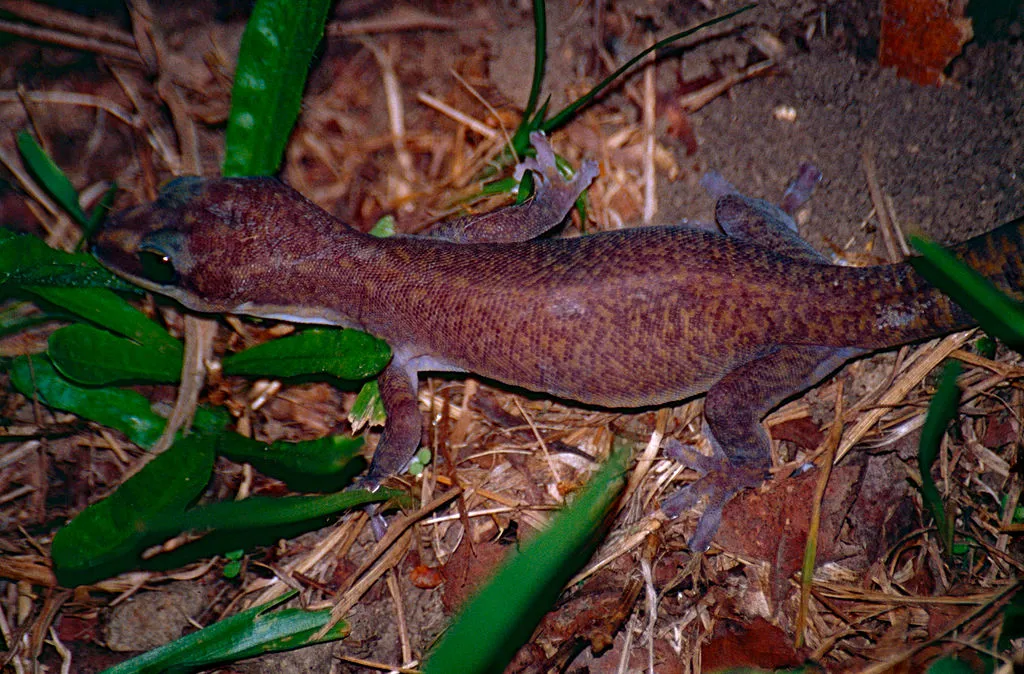
This gecko species was named in 1985 by Wells and Wellington in the Australian Journal of Herpetology, but the species was later synonymised with the Ocellated velvet gecko (Oedura monilis). Despite the subsequent change, it remains the first example of a species being named after David Attenborough.
Described in: 1985.
Attenborough's pintail (Acisoma attenboroughi)
Please note that external videos may contain ads:
Dragonfly Named After Attenborough! | #Attenborough90 | BBC
This beautiful dragonfly species is described as “actually very common, every farmer can find it in his paddy, every fisherman can see it in his pond, every school child can find it in the yard ... but now, people can go out there and say, hey look, that is Sir David's dragonfly.”
The species is found in Madagascar, and was one of four new species described in the paper. It's naming was in honour of Sir David Attenborough's 90th birthday in 2016.
Described in: 2016.
Read the full paper in Zootaxa. (link opens as PDF).
Flat lizard (Platysaurus attenboroughi)
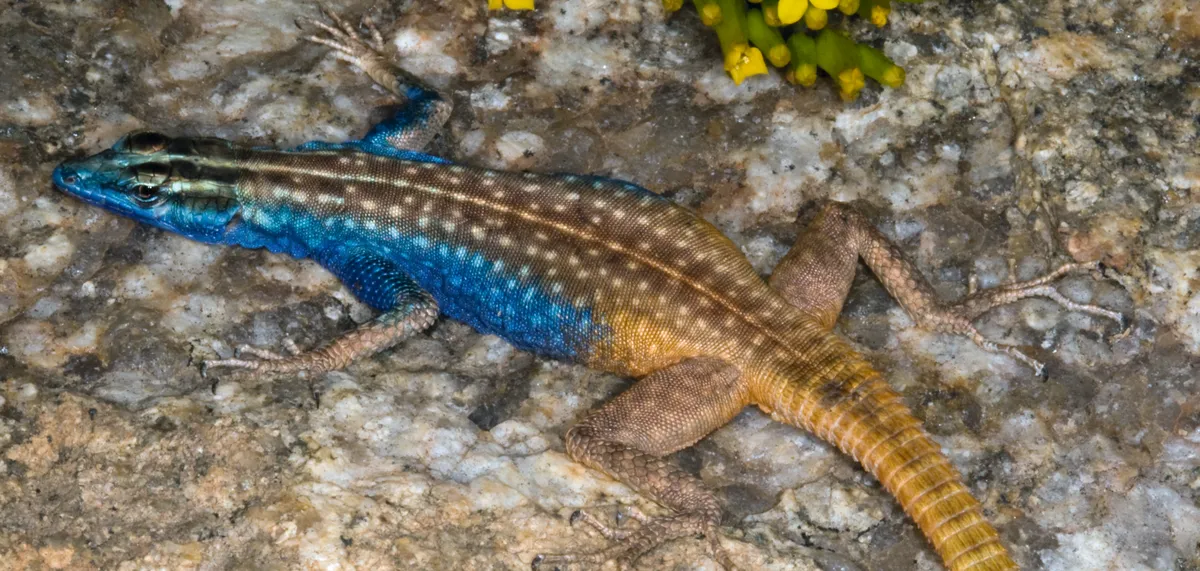
The fly-catching acrobatics and colourful sexual displays of Southern Africa's flat lizards were made famous by Attenborough's series Life in Cold Blood (see video below). They are also able to squeeze into cracks to escape predators and high temperatures.
Please note that external videos may contain ads:
Flat Lizard Colourful Displays & Fly Catching | Attenborough | BBC Studios
Males of this particular species have bright blue bellies, the colour extending to their elbows – and the icing on the cake is that the species' description in Zootaxa includes a photo of Attenborough in his trademark blue, short-sleeved shirt.
The species is apparently common on rock faces and boulders in a region of desert straddling the border between South Africa and Namibia.
Described in: 2015
Read the paper in Zootaxa.
Weevil (Trigonopterus attenboroughi)
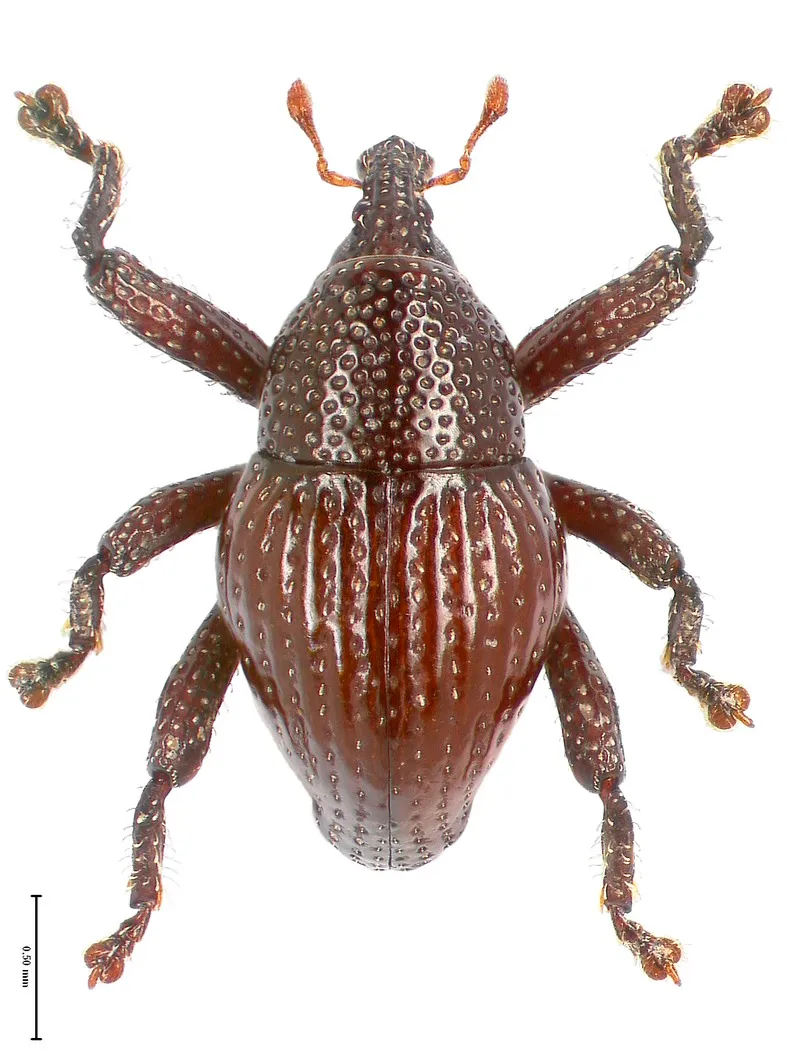
One of 98 Trigonopterus species described in just one paper (which was later beaten in 2019 by a paper that described 103 new Trigonopterus species), T. attenboroughi is a small and flightless weevil, measuring up to 2.63mm in length. It is found in Indonesia, and was found on the slopes of Mount Bawang in the West Kalimantan province at an elevation of 652 metres.
The lead author of the paper, Alex Riedel, decided to name one of the new weevil species after Attenborough, as “Me and my family liked to watch his documentaries, and I thought he deserved it for his great work.”
Described in: 2014.
Read the full paper in ZooKeys.
Attenborough's hawk-weed (Hieracium attenboroughianum)
The first, and so far possibly the only, living British species to be named after Sir David, Attenborough’s hawkweed (Hieracium ttenboroughianum) was discovered growing on the side of Cribyn in the Brecon Beacons in 2004, but was only properly classified in 2014.
Hawkweeds are a large genus of wildflowers in the sunflower or Compositae family, and are closely related to dandelions and chicory. Dr Tim Rich, who found it, said he named it after the presenter because Attenborough had inspired him to study ecology when he was 17.
Described in: 2014
Read the paper in the New Journal for Botany.
Ghost shrimp (Ctenocheloides attenboroughi)

A mysterious ghost shrimp species, Ctenocheloides attenboroughi was described from just one specimen – an adult female that was extracted from “a large, mud-cemented piece of rubble”, in northwestern Madagascar. At the time of description, it was the first species in the Ctenocheloides genus, though at least two more have been added since: C. almeidai in Brazil in 2013 by Arthur Anker, the scientist that described C. attenboroughi, and C. boucheti in Papua New Guinea in 2015.
Described in: 2010
Read the paper in the Journal of Natural History.
Long-beaked echidna (Zaglossus attenboroughi)
Echidnas are primitive, egg-laying mammals called monotremes. Covered in barbless, hollow spines, they are only found in Australia and New Guinea. Attenborough’s long-beaked echidna (Zaglossus attenboroughi) is even more restricted in its range, and only one specimen has ever been found.
According to the IUCN Red List of Threatened Species, it inhabits 20km2 of tropical forest around the Cyclops Mountains of Indonesian Papua. A Zoological Society of London EDGE of Existence team that visited in 2007 did not see any but were told by locals that the species still survives.
Described in: 1998
Attenborough's pitcher plant (Nepenthes attenboroughii)
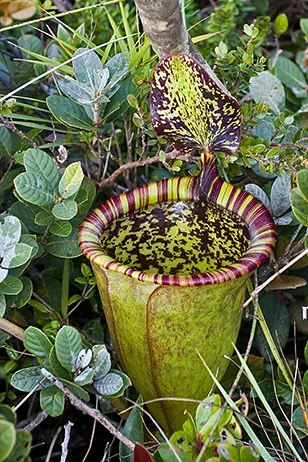
Reputedly large enough to catch rats (though this has never been observed), Attenborough’s pitcher plant was only discovered in 2007 in a remote highland area of Palawan, one of the islands in the Philippines archipelago.
Like all pitcher plants, it has a tube-like structure, the purpose of which is to catch animals that it then digests. The pitcher of Nepenthes attenboroughii can have a volume of up to 1.5 litres, and scientists have observed one that had trapped and subsequently digested a shrew.
Described in: 2009.
Read the full paper in the Botanical Journal of the Linnean Society.
Extinct marine reptile (Attenborosaurus conybeari)
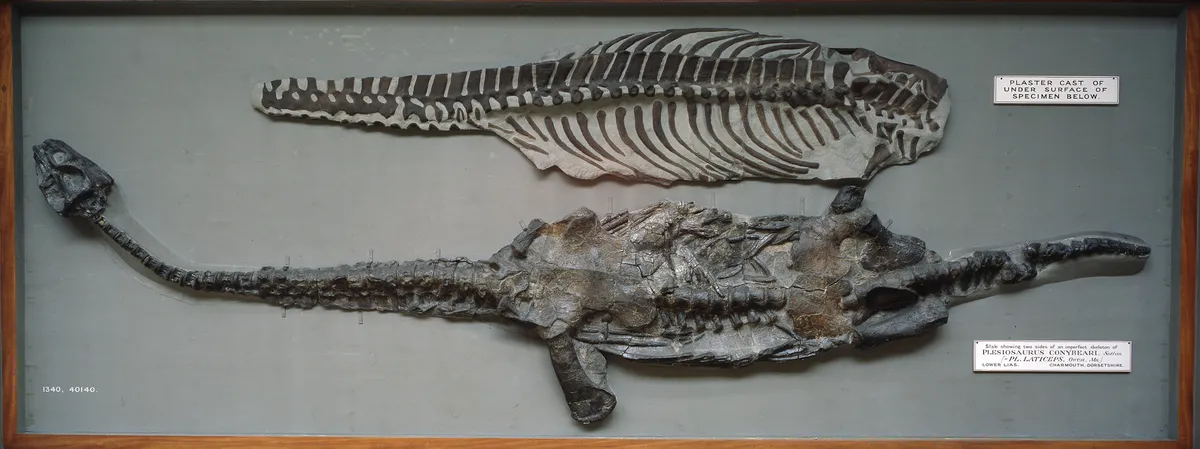
Five metres long, with a long thin neck, roundish body and flippers, Attenborosaurus conybeari was, in fact, originally classed within the better-known Plesiosaurus genus.
It originates from the Early Jurassic period 200 million years ago and was discovered near Charmouth, Dorset, in the latter part of the 19th century. The species was renamed in 1993 after examination of the fossil remains showed it should be reclassified. Sir David was honoured because of his childhood passion for fossil-collecting.
The original fossil was destroyed in 1940, when a bomb fell on Bristol Museum and Art Gallery during the Second World War. The plaster cast of the skeleton at the Natural History Museum in London (pictured above) is now the type specimen.
Redescribed in: 1993.
Dung beetle (Sylvicanthon attenboroughi)
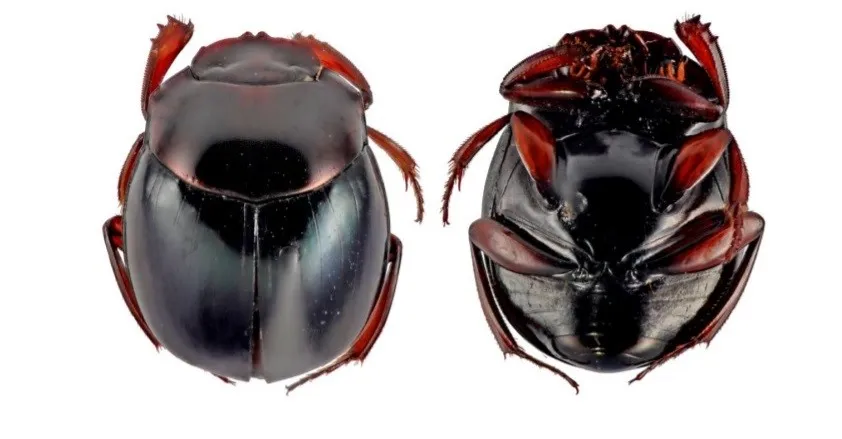
This round little beetle belongs to a species called Sylvicanthon attenboroughi, named in honour of Attenborough. Mario Cupello and Fernando Z. Vaz-de-Mello, the two scientists and co-authors that described the species, are both from Brazil, and said:
“In recognition of his profoundly influential work on the public understanding of natural history and evolutionary biology, which, for more than six decades, has been inspiring young people of successive generations (including the first author) to pursue a career as a biologist and the general public to know and preserve the beautiful world in which we live. We paraphrase him: “I did so because I know of no pleasure deeper than that which comes from contemplating the natural world and trying to understand it” (Attenborough 2002). The specific name is a noun in the genitive case.”
Described in: 2018.
Read the paper in the European Journal of Taxonomy.
Burgundy snail (Attenborougharion rubicundus)
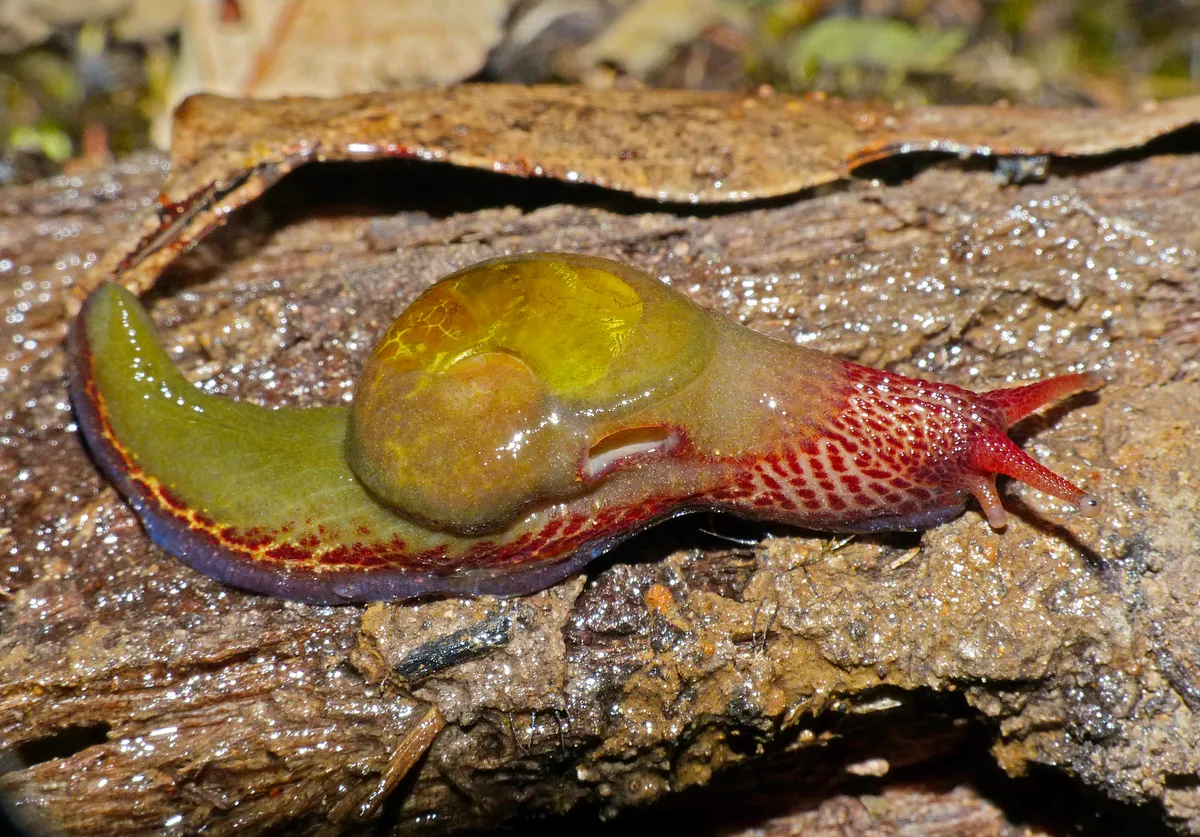
An extraordinary-looking, bright green and red land snail or semi-slug – so-called because it has a shell so small it cannot retract into it – Attenborougharion rubicundus is only found in 85km2 of wet forest in south-eastern Tasmania, Australia.
It was originally described as Helicarion rubicundus in 1978, but was assigned its own genus in 2007.
It is also sometimes known as the burgundy snail (though it shares this common name with another species, Helix pomatia). According to the Australian Museum in Sydney, whose scientists made the discovery: “The burgundy snail has not evolved into a full slug [because] it retains a fragile and transparent shell.”
Redescribed in: 2017.
Read the full paper in the Records of the Australian Museum. (link opens as a PDF)
Attenborough's rubber frog (Prisimantis attenboroughi)

Attenborough’s rubber frog (Pristimantis attenboroughi) is a small brown, grey or even slightly red-coloured frog found at altitudes of up to nearly 4,000m in central Peru.
“We dedicate this species to Sir David Frederick Attenborough in honour of his educational documentaries on wildlife, especially on amphibians (eg, Life in Cold Blood, Fabulous Frogs), and for raising awareness about the importance of wildlife conservation,” said the scientists when they announced their discovery.
Described in: 2017.
Read the full paper in ZooKeys.
Extinct marsupial (Microleo attenboroughi)
Microleo attenboroughi, an extinct kitten-sized predatory marsupial weighing little more than a bag of sugar, lived some 19 million years ago in north-west Queensland in Australia. Scientists say it inhabited the treetops of a lush rainforest, preying on birds, frogs, lizards and insects.
Its fossilised remains – skull fragments and teeth – were discovered at Riversleigh, a World Heritage site famous for its fossils, which provides a record of 25 million years of Australian natural history and which Sir David championed throughout his career.
Described in: 2016.
Read the full paper in Palaeontologia Electronica. (link opens as a PDF).
Fossilised fish (Materpiscis attenboroughi)
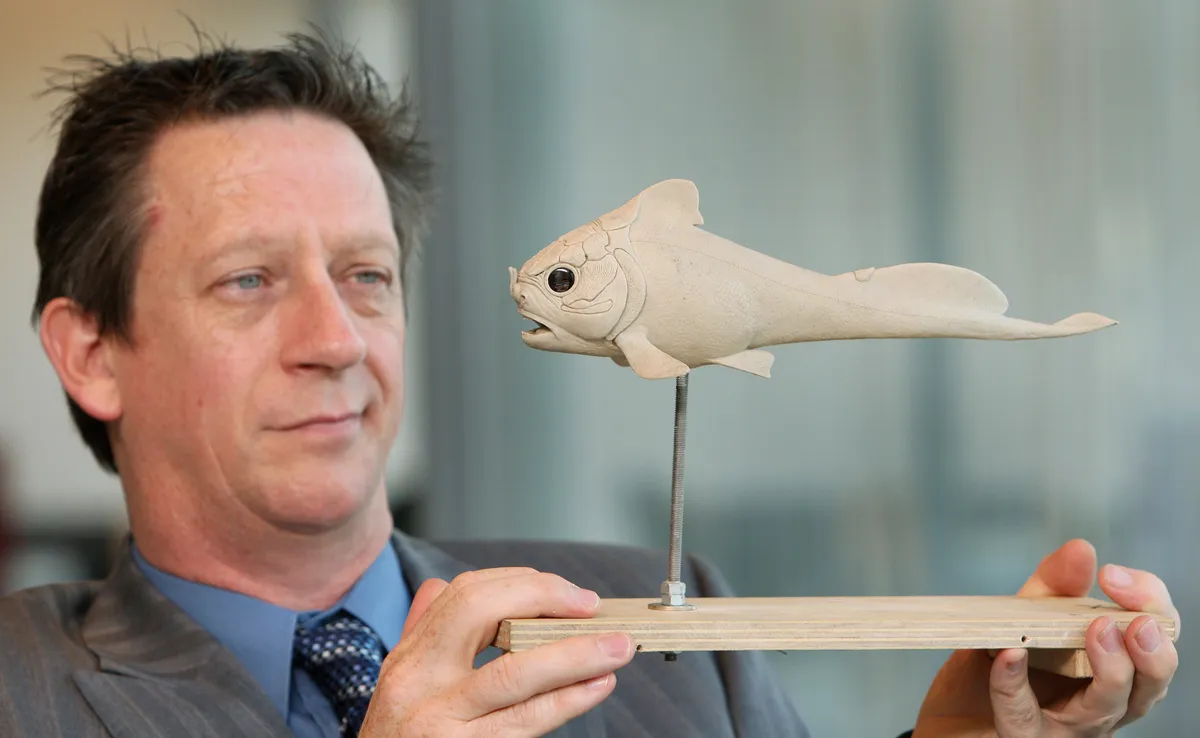
Another species that hails from Australia and is the oldest animal to bear Sir David’s name, is a bizarre fish, Materpiscis attenboroughi. It dates back an incredible 380 million years and is regarded as the first-known vertebrate to give birth to live young.
The fossil shows the embryo and its umbilical cord and its scientific name translates as Attenborough’s mother fish. The find was made at the Gogo site in Western Australia, and scientists wanted to honour the broadcaster because he drew attention to Gogo in Life on Earth.
Described in: 2008.
Read the paper in Nature.
More on new species and taxonomy:
Beetle (Micridium attenboroughi)

Part of a paper describing 11 new species in the Micridium and Micridina genera, Micridium attenboroughi is a small species of belonging to the Ptillidae family. Beetles in this family are sometimes called featherwing beetles, due to the narrowness and feathery-shape of their wings.
The species was described by Michael Darby, a scientific associate at the Natural History Museum in London, who said at the time “I have great pleasure in naming this species after Sir David Attenborough, the British naturalist and broadcaster, who has recently celebrated his 90th birthday."
Described in: 2017.
Read the paper in Zootaxa.
Extinct pygmy grasshopper (Electrotettix attenboroughi)
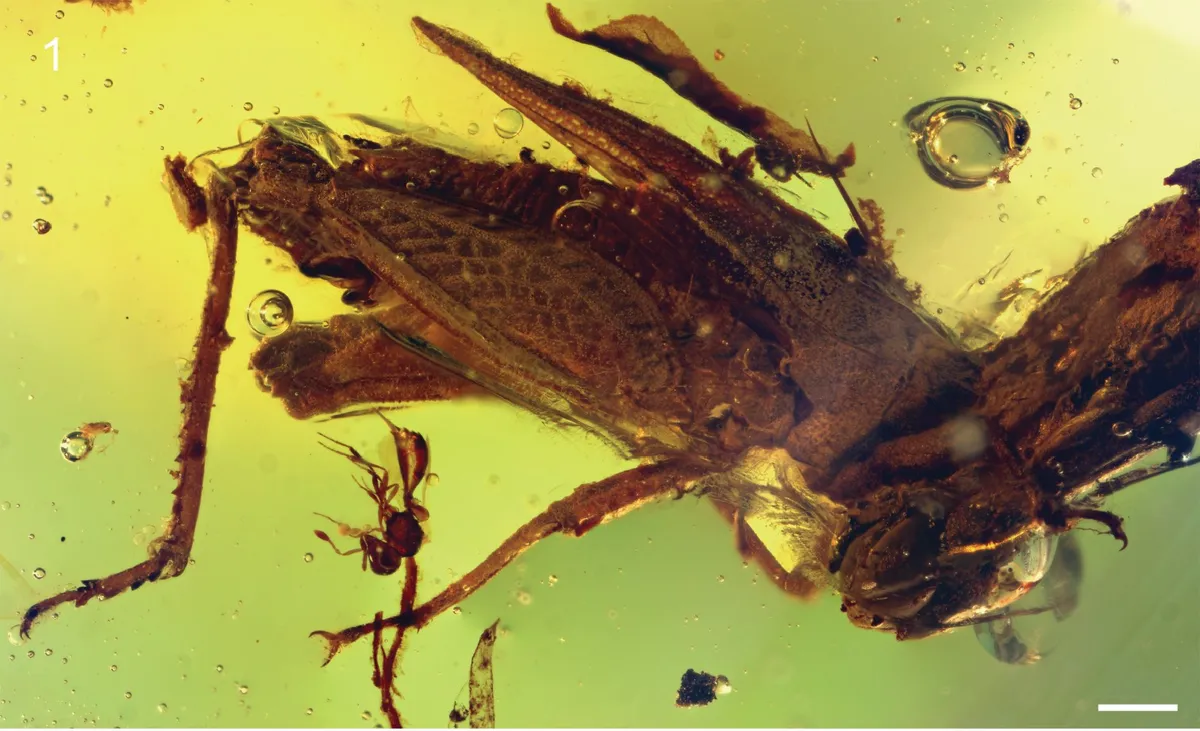
A 20-million-year-old species of pygmy grasshopper, this amazing specimen was discovered frozen in a piece of amber, or fossilised tree sap, in the Dominican Republic more than 50 years ago. However, it was not properly studied, nor was it officially named until 2014.
Electrotettix attenboroughi was an insect only the size of the thorn of a rose, but it is of great scientific interest because the species was on the point of evolving the loss of its wings. Sam Heads, of the University of Illinois, said he chose to honour Sir David in the naming because of the presenter’s interest in amber and because he was a childhood hero.
Described in: 2014.
Read the full paper in ZooKeys.
Tree (Blakea attenboroughii)
A tree species with magnificent bright blue flowers, Blakea attenboroughii was only discovered in 2007. It is native to Ecuador and was first found in the Cerro Candelaria reserve, a mixture of cloud-forest and high-altitude grassland called páramo, in the eastern cordillera of the Andes.
This special reserve was created with the aid of money contributed by the UK-based organisation, the World Land Trust – of which Sir David was a long-term patron.
Described in: 2007.
Read the full paper in the Proceedings of the California Academy of Sciences. (link opens as a PDF).
Tree (Sirdavidia solannona)
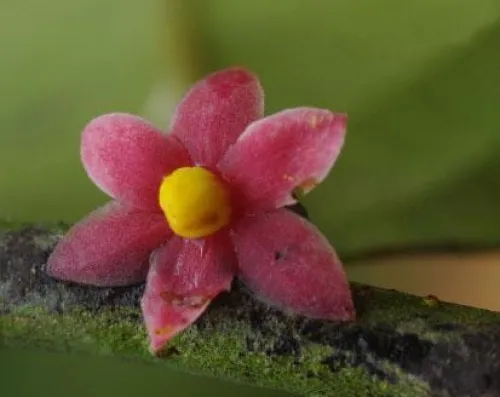
A second case of a genus name being named after Sir David Attenborough, this tree has pretty pink flowers and was discovered and collected by scientists near a road in Crystal Mountains National Park in Gabon. The morphology of the flowers “is highly suggestive of a buzz pollination syndrome. If confirmed, this would be the first documentation of such a pollination syndrome in Magnoliidae and early-diverging angiosperms in general.”
In change from the other species and genus named after Attenborough, this genus' name is derived from his title ‘Sir’ and first name ‘David’ to create ‘Sirdavidia’. The species name ‘solannona’ is derived from the flowers' similarity to those of Solanum species – a diverse group of plants which includes potatoes, tomatoes, aubergines, and nightshades.
Currently, the genus is monotypic, meaning that there is only one species in it.
Described in: 2015.
Read the full paper in the PhtyoKeys.
Main image: Sir David Attenborough with a photo of Attenborougharion rubicundus, and receiving the Lifetime Patron Award from Australia Museum in 2017. © James D. Morgan/Getty

